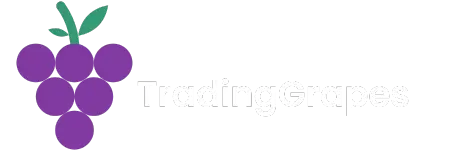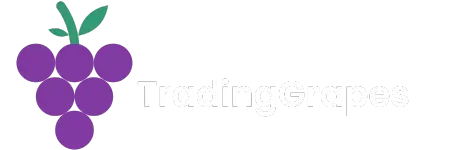California is one of the world’s most diverse and misunderstood wine regions. It’s famous for sunshine, Hollywood… and big, ripe reds — but the best Californian wines don’t behave like “sunshine in a bottle” at all.
The state’s top producers lean on altitude, fog, cold ocean air and careful site selection to craft wines with finesse, freshness, and structure — the same traits we typically associate with Bordeaux, not the West Coast.
In this guide, we break down:
- Why Californian wines vary so dramatically in style
- How AVAs (American Viticultural Areas) work
- Why “cooling influence” is everything
- Three benchmark wines worth knowing (and why each one matters)
AVAs 101: Why They Matter
Just like France has Bordeaux, Burgundy and Champagne, the U.S. uses AVAs (American Viticultural Areas) to designate regions with distinct terroir. Some AVAs are known for high-volume, inexpensive wines; others (like Napa’s mountain AVAs) are associated with top-tier, small-production bottles.
Knowing the AVA helps you predict:
- Wine quality
- Style (fresh + elegant vs. big + ripe)
- Investment or ageing potential

Caption: Californian AVAs. Source: Wine Spirit Education Trust (WSET)
Cooling Influence: The Secret to Elegance
California is technically a warm climate. On paper, it should produce richer, riper wines — unless something cools the vineyard down.
That “something” might be:
| Cooling Influence | Where it occurs | What it does |
|---|---|---|
| Altitude | Napa mountains (e.g., Mount Veeder) | Slows ripening, preserves acidity, adds structure |
| Fog | Sonoma / Napa Valley floor | Limits heat from the sun |
| Ocean breezes | Coastal AVAs (e.g., Russian River Valley, Santa Barbara) | Freshness + balance |
| Waterways | Inland pockets like Lodi | Extends ripening period |
The longer the ripening period, the more complexity you get — because acidity drops more slowly and sugar rises more slowly. The result = vibrant, elegant wines rather than cooked, jammy flavours.
Wine 1: Lokoya “Mount Veeder” Cabernet Sauvignon (2019)
California's answer to Chateau Latour. Mount Veeder is a mountain AVA within Napa
Valley. The vineyards sit above the fog line — so the grapes ripen fully under the sun, but altitude keeps them cool.That combo = power + freshness.
Lokoya only makes Cabernet Sauvignon, sourced from different mountain AVAs, each showcasing a distinct terroir profile. Production is tiny (around 2,000 cases), and the 2019 has been directly compared to Chateau Latour — a Bordeaux First Growth from the legendary 1855 Classification.
This is true investment-grade Napa: precision, structure, and long-term cellaring potential.
Think: mountain tannin structure, cassis, graphite, long life ahead.

Caption: Napa Valley AVAs. Source: Wine Spirit Education Trust (WSET)
Wine 2: Hartford “Old Vine” Zinfandel (2022) — Russian River Valley
Zinfandel can be either incredible or forgettable. The difference almost always comes down to fruit sourcing and whether it was hand-harvested.
Zinfandel is notorious for ripening unevenly. Machine-harvested Zin = underripe + overripe + ripe grapes in one mix → unbalanced wine.
But old vines? Completely different story.
Old vines produce lower yields but higher concentration. Their root systems are deeply embedded, pulling more minerality and character from the soil. In Russian River Valley, fog keeps it cool — protecting freshness while old vines deliver density and spice.
Think: raspberry compote, cracked pepper, freshness, savoury depth.
It’s Zin for serious wine drinkers — not the jammy supermarket style.
Wine 3: Jonata “Todos” (2019) — Santa Ynez Valley (Santa Barbara)
Jonata is the sister estate of Screaming Eagle, one of the most coveted and expensive wines in America. Todos is their “field blend” of everything grown on the estate — hence the name ("todos" = "everyone").
Santa Barbara is cooler than people realise because the mountain ranges run east–west, funneling cold Pacific air inland. That allows Bordeaux varieties like Cabernet Sauvignon and Cabernet Franc to remain vibrant rather than overly ripe.
This is a brilliant entry into “serious California” at a far more approachable price point than Screaming Eagle — with pedigree baked in.
Think: blueberry, cassis, licorice, structure + generosity.
Final sip
If you want to quickly read a Californian label:
| If you see… | Expect… |
|---|---|
| Mountain AVA (e.g. Mount Veeder) | Structured, ageworthy, “Bordeaux-like” style |
| Coastal AVA with fog (e.g. Russian River Valley) | Fresh, lifted aromatics |
| Old Vine | Concentration + complexity |
| Sister estate to cult winery | Collectability without the cult price |
Each of the wines above proves a point — California isn’t one style, but a spectrum determined by where and how grapes are grown.










